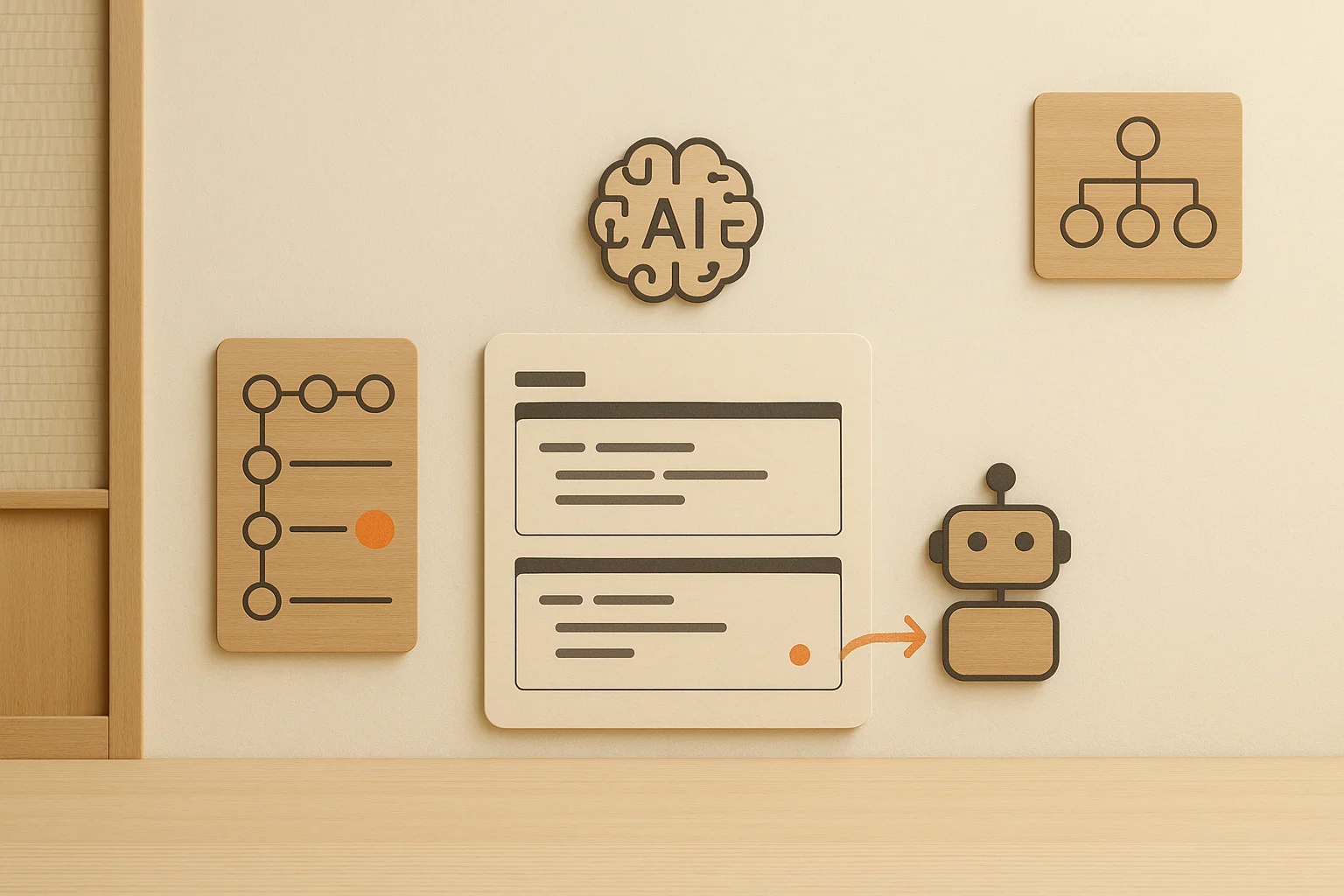Quality Code Practices for Modern Development

Quality code is the foundation of maintainable, scalable software systems. In 2024, enterprise teams face unprecedented challenges in maintaining code quality while shipping features at velocity. This comprehensive guide covers battle-tested practices, modern tools, and proven methodologies that help engineering teams build sustainable, high-quality software systems.
📊 The Cost of Poor Code Quality
- • Technical debt costs organizations $85 billion annually in the US alone
- • Poor code quality increases development time by 300-400%
- • 70% of software failures are attributed to maintainability issues
- • Teams with high code quality ship features 2.5x faster than those without
The SOLID Foundation: Enterprise-Grade Design Principles
Robert C. Martin's SOLID principles remain the cornerstone of quality object-oriented design. These five principles provide a comprehensive framework for creating modular, maintainable, and extensible software systems that stand the test of time.
Single Responsibility Principle (SRP)
Definition: "There should never be more than one reason for a class to change." Every class should have only one responsibility.
✅ Good Example:
// Separate concerns clearly
class UserValidator {
validateEmail(email: string): boolean { /* validation logic */ }
validatePassword(password: string): boolean { /* validation logic */ }
}
class UserRepository {
save(user: User): Promise<User> { /* database logic */ }
findById(id: string): Promise<User> { /* database logic */ }
}
class UserService {
constructor(
private validator: UserValidator,
private repository: UserRepository
) {}
}❌ Poor Example:
// God class with multiple responsibilities
class UserManager {
validateEmail(email: string): boolean { /* validation */ }
hashPassword(password: string): string { /* encryption */ }
saveToDatabase(user: User): void { /* database */ }
sendWelcomeEmail(user: User): void { /* email */ }
generateReport(): string { /* reporting */ }
}Open/Closed Principle (OCP)
Definition: Software entities should be open for extension but closed for modification.
Implementation Strategy:
// Use abstractions to enable extension
interface PaymentProcessor {
process(amount: number): Promise<PaymentResult>;
}
class StripeProcessor implements PaymentProcessor {
process(amount: number): Promise<PaymentResult> { /* Stripe logic */ }
}
class PayPalProcessor implements PaymentProcessor {
process(amount: number): Promise<PaymentResult> { /* PayPal logic */ }
}
// Add new processors without modifying existing code
class CryptoProcessor implements PaymentProcessor {
process(amount: number): Promise<PaymentResult> { /* Crypto logic */ }
}Clean Code Principles: Writing Self-Documenting Software
Clean code represents a comprehensive approach to software development that prioritizes readability, simplicity, and elegance. According to Robert C. Martin, clean code should be direct, efficient, properly structured, and readable by both computers and humans.
Meaningful Names and Clear Intent
Code should read like well-written prose. Choose descriptive variable names, function names, and class names that clearly express their purpose and intent.
✅ Clear and Descriptive
const activeUserCount = getUsersLoggedInToday();
const isEmailValid = validateEmailFormat(email);
const calculateTotalPrice = (items: CartItem[]) => {
return items.reduce((total, item) =>
total + (item.price * item.quantity), 0
);
};❌ Cryptic and Unclear
const x = getUsrs();
const flag = chk(email);
const calc = (arr) => {
return arr.reduce((a, b) =>
a + (b.p * b.q), 0
);
};Functions: Small, Focused, and Testable
Functions should generally fit on a single screen and do one thing well. According toCodacy's clean code analysis, small functions are significantly easier to test, debug, and reuse.
Function Design Best Practices
- • Maximum 20 lines: Keep functions concise and focused
- • Single purpose: Each function should do one thing well
- • Descriptive names: Function names should describe what they do
- • Minimal parameters: Aim for 3 or fewer parameters
- • No side effects: Functions should be predictable and pure when possible
Modern Code Quality Tools and Implementation
In 2024, successful engineering teams leverage a comprehensive toolkit of automated code quality tools. According toBlueOptima's 2024 analysis, teams using automated quality tools ship features 2.5x faster while maintaining higher quality standards.
Essential Tool Stack
| Tool Category | Recommended Tools | Primary Purpose | Implementation Timeline |
|---|---|---|---|
| Static Analysis | SonarQube, ESLint, TypeScript | Code quality, security vulnerabilities | Week 1-2 |
| Code Formatting | Prettier, Black, gofmt | Consistent code formatting | Week 1 |
| Testing | Jest, Pytest, JUnit | Automated testing, coverage | Week 2-4 |
| AI Code Review | Propel, CodeRabbit, GitHub Copilot | Intelligent review, suggestions | Week 3-6 |
| Security | Snyk, OWASP ZAP, Bandit | Vulnerability detection | Week 4-8 |
SonarQube: Comprehensive Quality Analysis
SonarQube provides comprehensive code quality analysis across over 20 programming languages. According toResearchGate analysis, SonarQube covers seven critical axes of code quality: architecture and design, duplications, unit tests, complexity, potential bugs, coding rules, and comments.
Key SonarQube Metrics
- • Technical Debt Ratio: Cost to fix issues / Development cost
- • Code Coverage: Percentage of code covered by tests
- • Duplicated Lines: Percentage of duplicated code
- • Cyclomatic Complexity: Measure of code complexity
- • Maintainability Rating: A-E scale based on technical debt
Testing Strategies for Quality Assurance
Comprehensive testing is fundamental to code quality. According toTestlio's 2024 QA best practices guide, effective testing strategies combine automated and manual approaches with modern methodologies like risk-based testing and continuous testing.
Test Pyramid Implementation
The Testing Pyramid
Full user journey testing
Component interaction testing
Individual function/method testing
Test-Driven Development (TDD)
TDD is a practice where developers write tests before writing the actual code. This approach ensures better code design, higher test coverage, and more reliable software. The TDD cycle follows the "Red-Green-Refactor" pattern:
🔴 Red
Write a failing test that defines the desired functionality
🟢 Green
Write the minimal code necessary to make the test pass
🔄 Refactor
Improve the code while keeping all tests passing
Technical Debt Management and Measurement
Technical debt is the sum of maintainability issue remediation costs. According toSonarSource's practical guide, technical debt should be measured systematically using established metrics and addressed through strategic refactoring initiatives.
Technical Debt Calculation
Technical Debt Ratio Formula
Technical Debt Ratio = Technical Debt / (Cost per Line × Lines of Code)
- • Technical Debt: Sum of issue remediation costs (in minutes)
- • Cost per Line: Default 30 minutes (configurable)
- • Target Ratio: < 5% for healthy codebases
Refactoring Strategies
Regular refactoring prevents technical debt accumulation and maintains code quality over time. Effective refactoring strategies include:
- Boy Scout Rule: Always leave code cleaner than you found it
- Opportunistic Refactoring: Improve code when working in specific areas
- Planned Refactoring: Dedicated sprints for technical debt reduction
- Automated Refactoring: Use IDE tools for safe structural changes
Code Review Excellence
Code reviews are critical for maintaining quality and knowledge sharing. According toBlueOptima's research, effective code reviews should allocate dedicated time for peer review with fresh eyes examining the code, serving as both a quality filter and a learning opportunity.
Effective Review Practices
✅ Review Best Practices
- • Review small, focused changes (< 400 lines)
- • Focus on logic, not style (use automated tools)
- • Ask questions, don't just point out issues
- • Provide specific, actionable feedback
- • Highlight good code practices
- • Review within 24 hours of submission
❌ Review Anti-Patterns
- • Nitpicking on formatting (automate this)
- • Reviewing massive pull requests (> 1000 lines)
- • Being overly critical without context
- • Approving without actually reviewing
- • Focusing only on negative feedback
- • Delaying reviews for days or weeks
Enterprise Implementation Roadmap
Implementing quality practices across enterprise teams requires a structured approach. Based on analysis fromOpsLevel's enterprise best practices, successful implementations follow a phased approach with clear milestones and metrics.
12-Week Implementation Timeline
Weeks 1-3: Foundation
- • Set up automated formatting (Prettier, Black)
- • Configure basic linting (ESLint, PyLint)
- • Establish Git hooks for quality checks
- • Train team on clean code principles
Weeks 4-6: Testing Infrastructure
- • Implement unit testing framework
- • Set minimum coverage thresholds (80%+)
- • Configure CI/CD pipeline integration
- • Begin TDD training and adoption
Weeks 7-9: Advanced Analysis
- • Deploy SonarQube for comprehensive analysis
- • Configure security scanning tools
- • Establish technical debt tracking
- • Implement automated code review tools
Weeks 10-12: Optimization
- • Fine-tune quality gates and thresholds
- • Establish refactoring schedules
- • Create quality metrics dashboards
- • Conduct team retrospectives and improvements
Measuring Success: Key Quality Metrics
Successful quality initiatives require measurable outcomes. Track these essential metrics to gauge your code quality improvements:
📈 Leading Indicators
- • Code review coverage: 100% of changes
- • Test coverage: > 80% for critical paths
- • Technical debt ratio: < 5%
- • Code duplication: < 3%
- • Average function complexity: < 10
📊 Lagging Indicators
- • Production bug rate: < 1 per 1000 LOC
- • Mean time to resolution: < 4 hours
- • Developer velocity: 25% improvement
- • Customer satisfaction: > 95%
- • Time to market: 50% reduction
Common Implementation Challenges and Solutions
Challenge: Developer Resistance
Teams may resist new processes as "overhead" that slows development.
Solution: Demonstrate ROI with metrics, start with voluntary adoption, and celebrate early wins.
Challenge: Legacy Code Technical Debt
Existing codebases may have significant technical debt that's expensive to address.
Solution: Use the Strangler Fig pattern, apply quality standards to new code, and incrementally refactor.
Challenge: Tool Integration Complexity
Multiple quality tools can create complex, fragmented workflows.
Solution: Use integrated platforms like GitHub Actions or unified tools like SonarQube.
The Future of Code Quality
As we advance through 2024, several trends are shaping the future of code quality practices:
- AI-Powered Code Review: Tools like Propel provide intelligent, context-aware code analysis with 95% accuracy
- Predictive Quality Analytics: Machine learning models predict defect probability and technical debt accumulation
- Real-time Quality Feedback: IDE integrations provide instant quality feedback during development
- Security-First Quality: Shift-left security practices integrated into quality pipelines
- Developer Experience Focus: Quality tools designed to enhance, not hinder, developer productivity
🚀 Ready to Transform Your Code Quality?
Implementing these quality practices can seem overwhelming, but you don't have to do it alone. Modern AI-powered tools like Propel can accelerate your quality transformation by providing intelligent code review and actionable insights.
Start your quality transformation today with proven practices, automated tools, and expert guidance.
Conclusion
Quality code practices are not just theoretical concepts—they're practical necessities for modern software development. By implementing SOLID principles, leveraging automated tools, maintaining comprehensive test coverage, and fostering a culture of continuous improvement, engineering teams can build software that is maintainable, scalable, and robust.
The investment in code quality pays dividends through faster development cycles, fewer production issues, and higher team productivity. As software systems grow more complex, the teams that master these quality practices will be the ones that thrive.
Key Takeaways
- • Quality code saves 300-400% in development time over the long term
- • SOLID principles provide a proven foundation for maintainable architecture
- • Automated tools can improve team velocity by 2.5x when properly implemented
- • Regular refactoring prevents technical debt from becoming unmanageable
- • Comprehensive testing strategies catch issues early and reduce production bugs
References
- 1. Codacy. "A Deep Dive Into Clean Code Principles"
- 2. DigitalOcean. "SOLID Design Principles Explained"
- 3. BlueOptima. "6 Strategies to Measure and Improve Code Quality in 2024"
- 4. ResearchGate. "SonarQube as a tool to identify software metrics and technical debt"
- 5. SonarSource. "Measuring and Identifying Code-level Technical Debt"
- 6. Testlio. "13 QA Testing Best Practices For 2024"
- 7. OpsLevel. "Standards in software development and 9 best practices"
- 8. Scalastic. "Principles of Software Development: SOLID, DRY, KISS, and more"
- 9. Caltech. "Clean Code Principles: Enhancing Software Quality and Maintainability"
- 10. PixelFree Studio. "Ultimate Guide to Code Quality and Maintainability in 2024"
Ready to Transform Your Code Review Process?
See how Propel's AI-powered code review helps engineering teams ship better code faster with intelligent analysis and actionable feedback.
